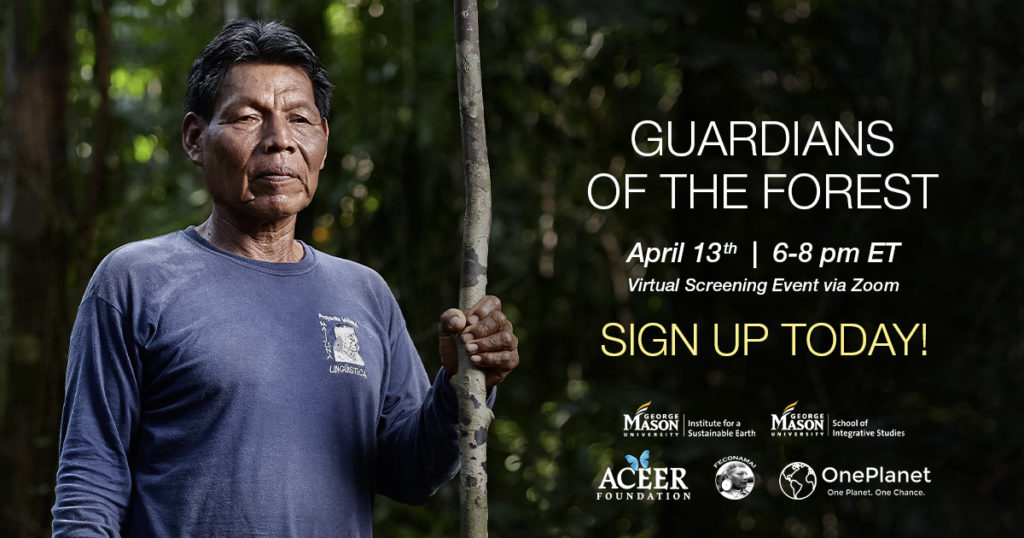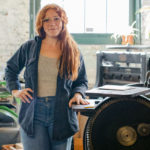
Lindsay Schmittle
Conservation Leader, ACEER Artist in Residence 2022
Gingerly Press is the printmaking studio practice of letterpress artist, Lindsay Schmittle. Lindsay discovered her love for old-school letterpress printing as a Visual Communications major at the University of Delaware. Jaded by the copious screen time of graphic design, Lindsay found her sweet spot in the letterpress studio, at the intersection of design, illustration and hands-on craft.
After honing her skills at various print shops post-graduation, Lindsay began her own venture under the name of Gingerly Press. She relocated across the state of Pennsylvania to expand her studio practice in Pittsburgh in August 2019.
Inspired by both her big & small adventures in nature, Lindsay creates colorful & playful letterpress printed artworks & stationery products that share nature’s simple stories through vintage handset type and hand-carved blocks. She has collections of letterpress printed wall art inspired by her 2017 solo thru-hike of the Appalachian Trail, her 2022 ACEER Artist Residency working with the Indigenous Maijuna community of the Peruvian Amazon, as well as the most simple of strolls on trails local to Pittsburgh. She creates to share nature’s small beauties, even while on the biggest of adventures, to encourage others to slow down, be mindful, and soak up the simple joys nature has to offer all around us. Her wall art brightens your homes and empowers you to explore the outdoors more, appreciate nature’s beauty, and adopt more sustainable living practices for a healthier planet.
Learn more about Lindsay Schmittle
April 2, 2022
My Artist Residency Experience in the Amazon Rainforest
By Lindsay Schmittle, Gingerly Press
My experience on the 2022 ACEER Artist Residency along the Sucusari River Basin deep in the Amazon Rainforest of Peru was definitely not your average artist residency experience. While this was my first true artist residency, I know that in most residencies, artists tend to spend the majority of their time making new work in a new space. I knew going into this trip however, that this would be a different experience, for a variety of reasons, than most other artist residencies I’ve seen others participate in.


Photo Credit: LeeAnn K Photography and Lindsay Schmittle
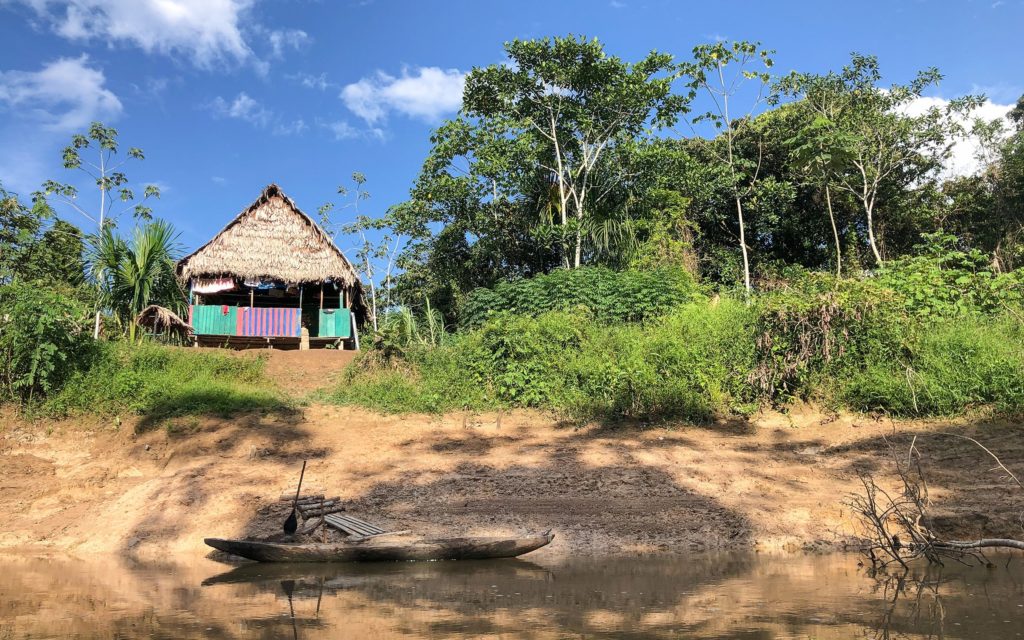
The first reason being that I do letterpress printing with big antique printing presses, vintage metal & wood type and hand-carved blocks—what I usually dub my “heavy metal baggage.” There was no way any of my regular equipment would be traveling with me, let alone to a place so humid that would cause my medium to rust! Secondly, unlike your average artist residency where I’d be traveling with other fine artists, I was traveling mostly with a group of scientists and conservationists—not my normal company!
Lastly, and most importantly, I knew that, for me, this trip was not focused on expanding my art practice and style so much as using my art to share the story of the vulnerable biodiverse rainforest and Indigenous Maijuna community in their fight against the proposed road construction threatening their land and livelihood. Sure, if my art practice, style and print experimentations expand in the process of this visual storytelling, that’s all the better, but unlike most artist residencies, that wasn’t my main goal.
I knew that, for me, this trip was not focused on expanding my art practice and style so much as using my art to share the story of the vulnerable biodiverse rainforest and Indigenous Maijuna community in their fight against the proposed road construction threatening their land and livelihood.
The Expedition
My goal for the 20 days spent in the Amazon Rainforest this past January was to be a sponge, soaking up as much as I could of the experience, and not judging what would or wouldn’t inspire the art collection to come, but just being present to absorb and record it all.
Looking at the expedition itinerary ahead of time, I couldn’t quite tell exactly how much free time I’d have to wander the trails around the lodges, collect textures & inspiration on my own and actually make anything while there. While I left my letterpress equipment back in Pittsburgh, I packed materials for collage, flower/plant pressings, and some rough relief printing will Gelli Plates. However, while I pressed many plants, I never ended up opening my collage and Gelli Plate relief printing materials on the trip. I ended up being the only fine artist on the trip, as the other artist who had planned to come couldn’t make it due to a last minute back injury & surgery. If the other artist had made it on the trip, I might have felt more inclined to sit quietly side by side with her working on making some collages and relief prints while there. However, as the only fine artist there and with my main mission being to soak up the experience, I felt the need to be where the action was, absorbing as much as I could.
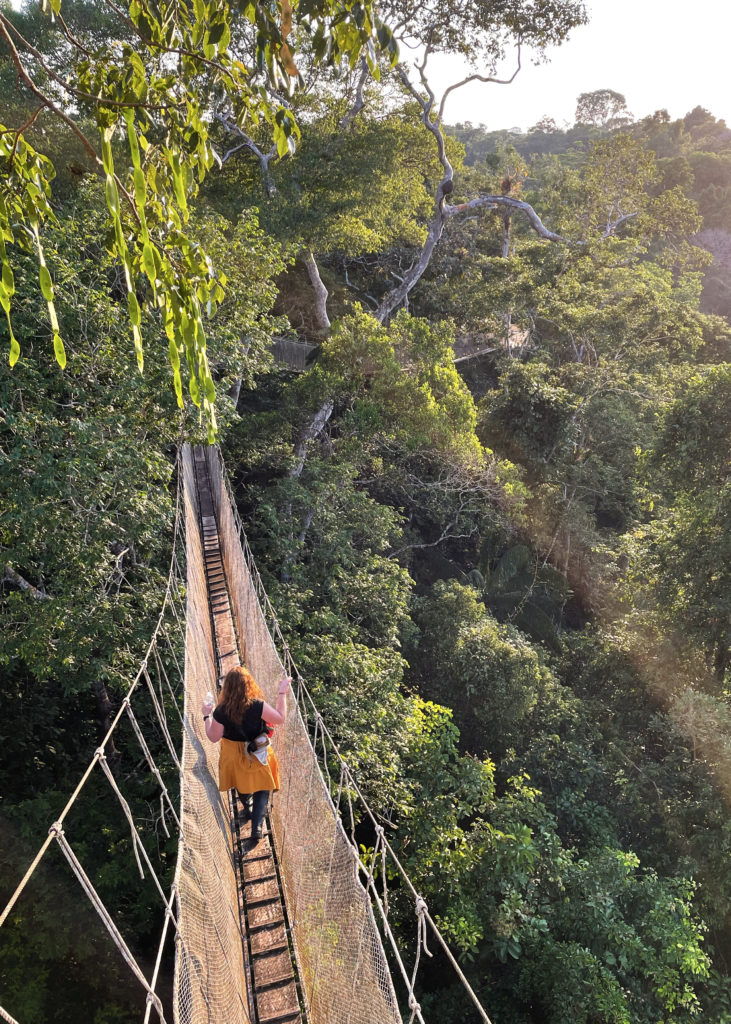
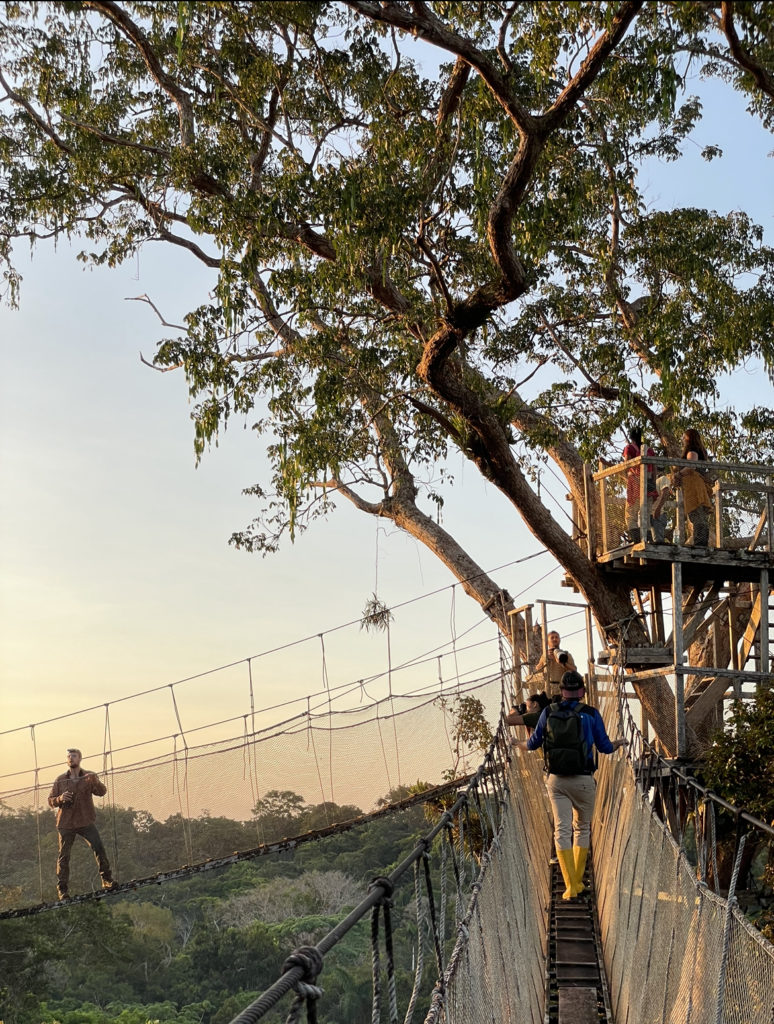
As an avid hiker, I often teamed up with the research team, going out on daily treks in the rainforest, following our machete-wielding Maijuna guides who cut paths straight through the dense brush to take us to their hunting grounds and the sites of the group’s research: mineral licks. These naturally occurring swamp-like sites act like watering/feeding holes, where animals come to lick the soil to supplement their diets with needed micronutrients and clays. Our group collected soil samples and detailed notes on each site to provide evidence of the importance of these sites in the rainforest ecosystem. Joining the trekking group allowed me to explore more “untouched” rainforest where trails aren’t present, see how scientists conduct field research and witness how intuitively connected with the forest the Maijuna are for their survival. I found it amazing how we’d be bushwhacking for hours, without a single trail marker and still somehow end up back where we started by the end of the day. Our extremely knowledgeable Maijuna guides were truly the key to our access to the forest for conducting this research, and one of my 11 x 14” abstract prints will be a visual representation of this concept.
Joining the trekking group allowed me to explore more “untouched” rainforest where trails aren’t present, see how scientists conduct field research and witness how intuitively connected with the forest the Maijuna are for their survival.

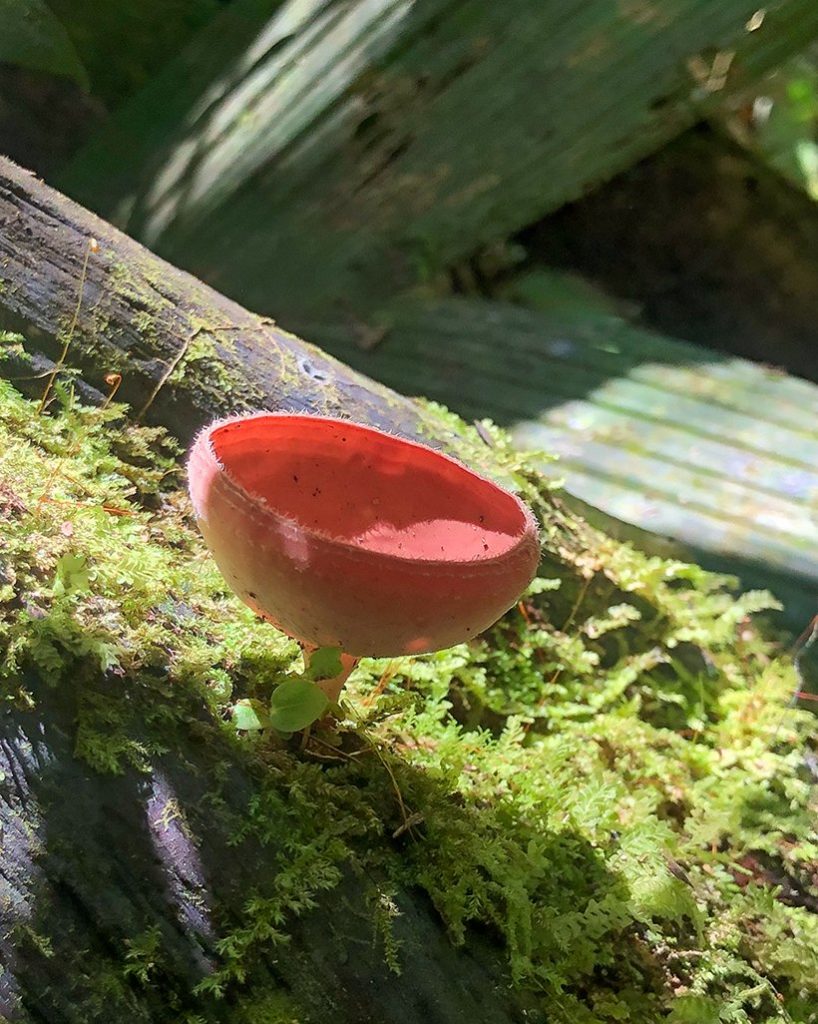
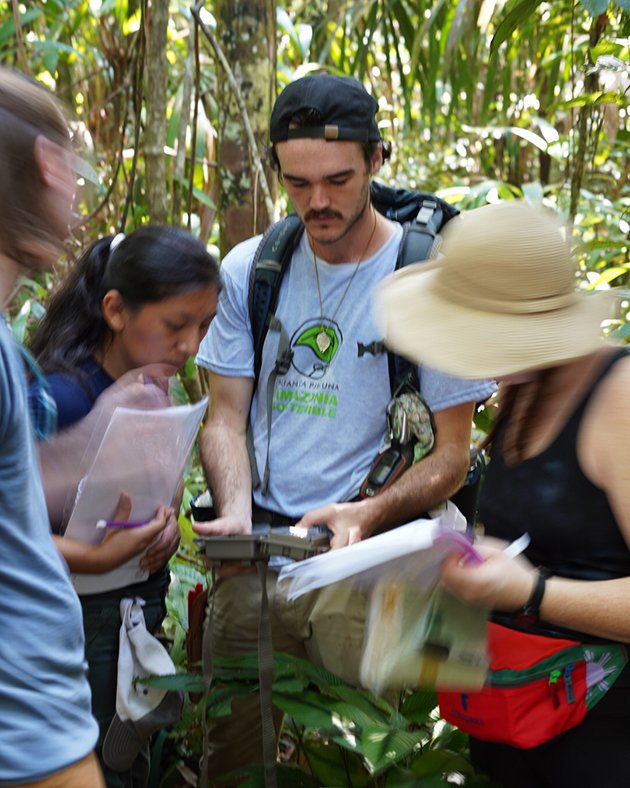
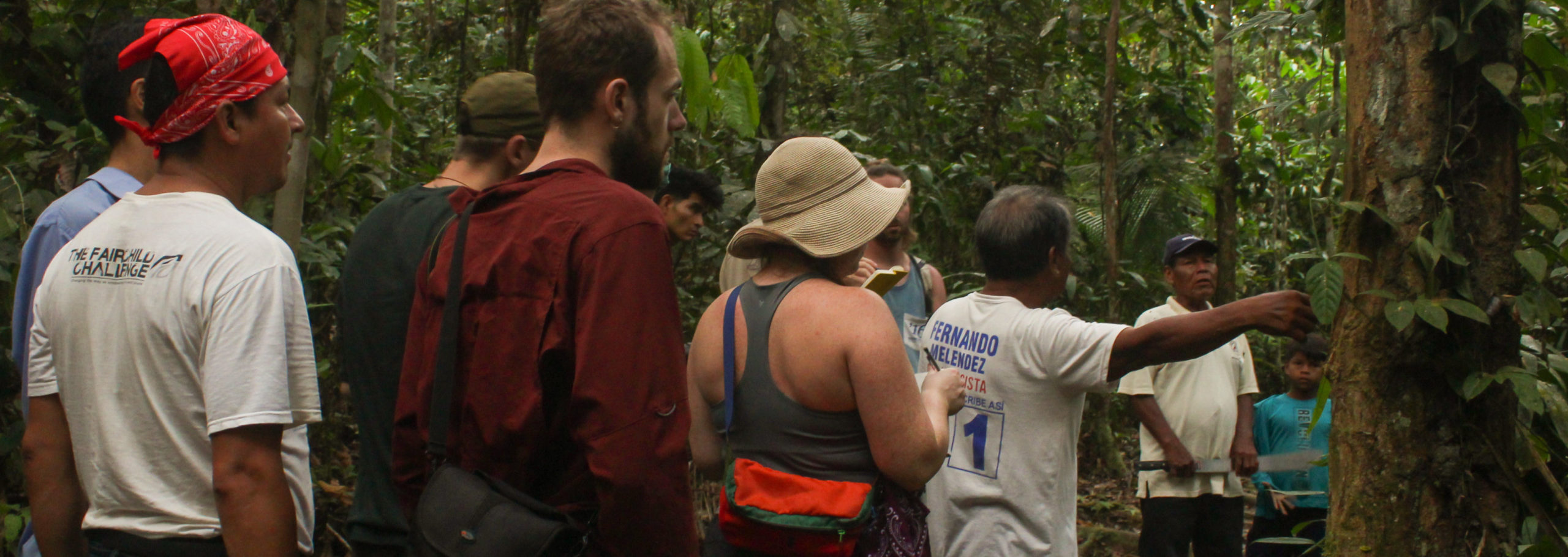
When I wasn’t out on a trek, I would either be up river at the Maijuna community or roaming the trails around the ExplorNapo Lodge and ACTS Field Station where our group stayed. When roaming the trails alone, I’d take advantage of a much slower pace to soak up all the little living details the rainforest has to offer. I collected my fair share of mosquito bites as I’d snap reference photos of inspiring natural compositions & stories and collect textures from the forest floor. After nearly each stroll I’d find a moment to curl up in a hammock with my sketchbook to jot down notes and rough sketches on the various things I discovered.
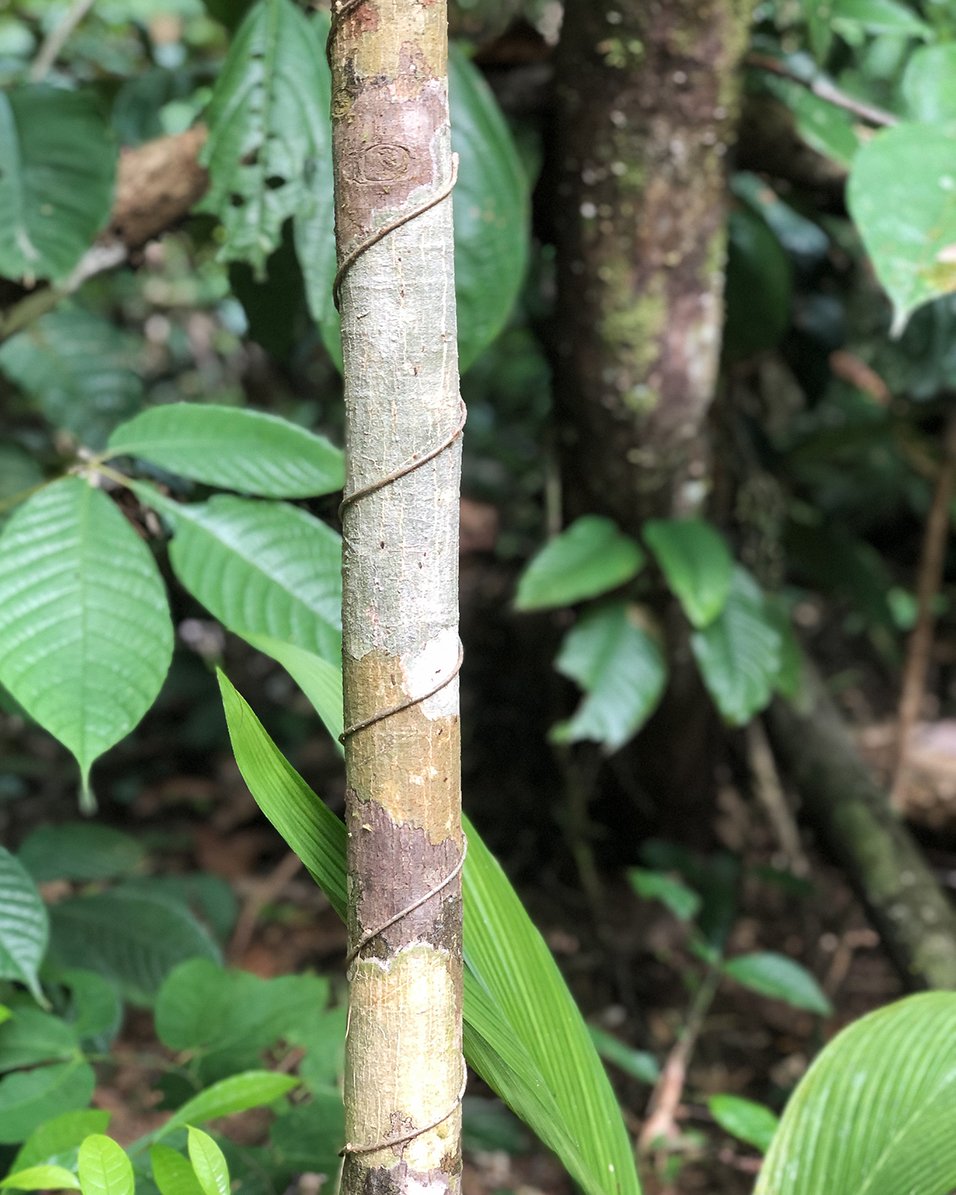

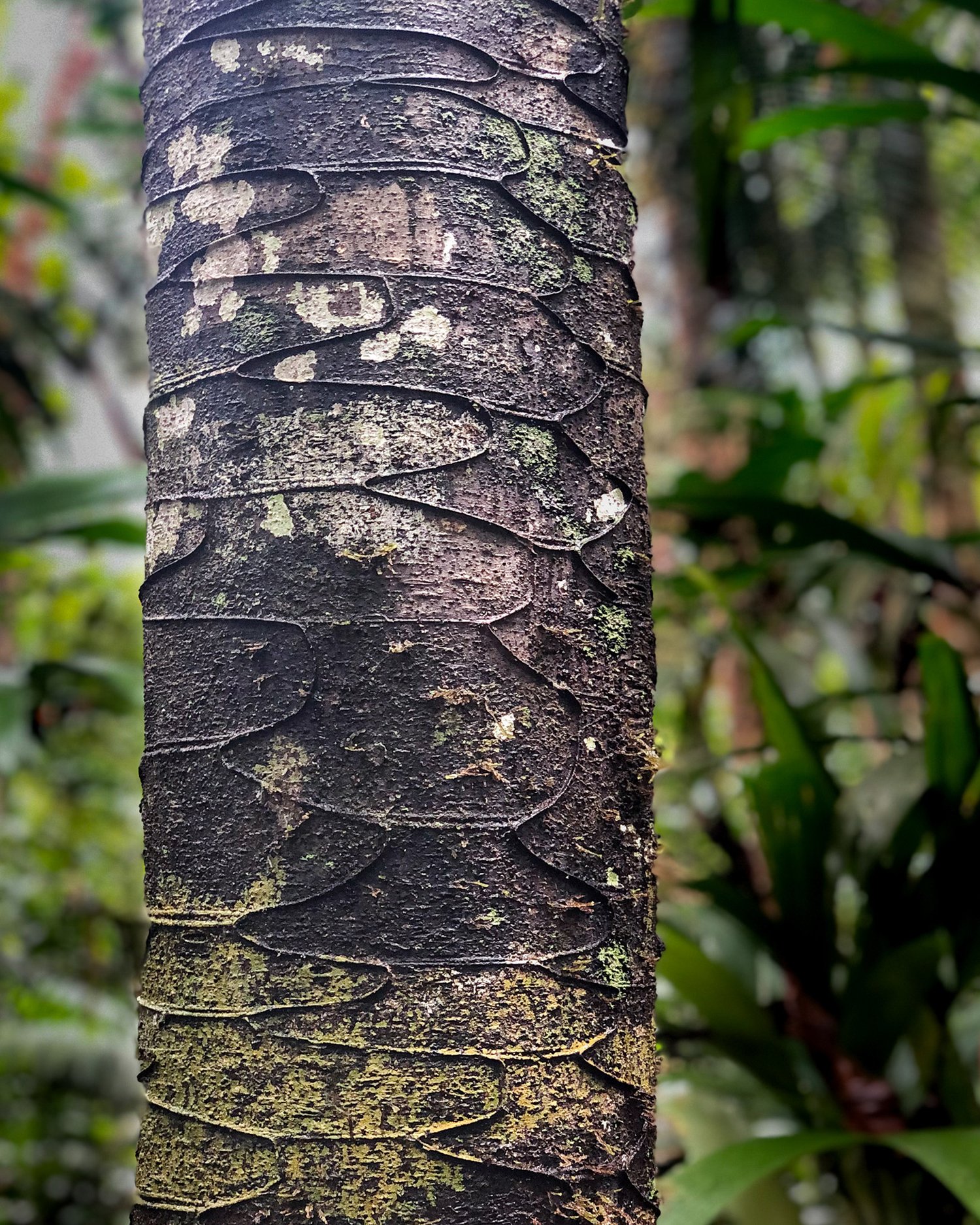
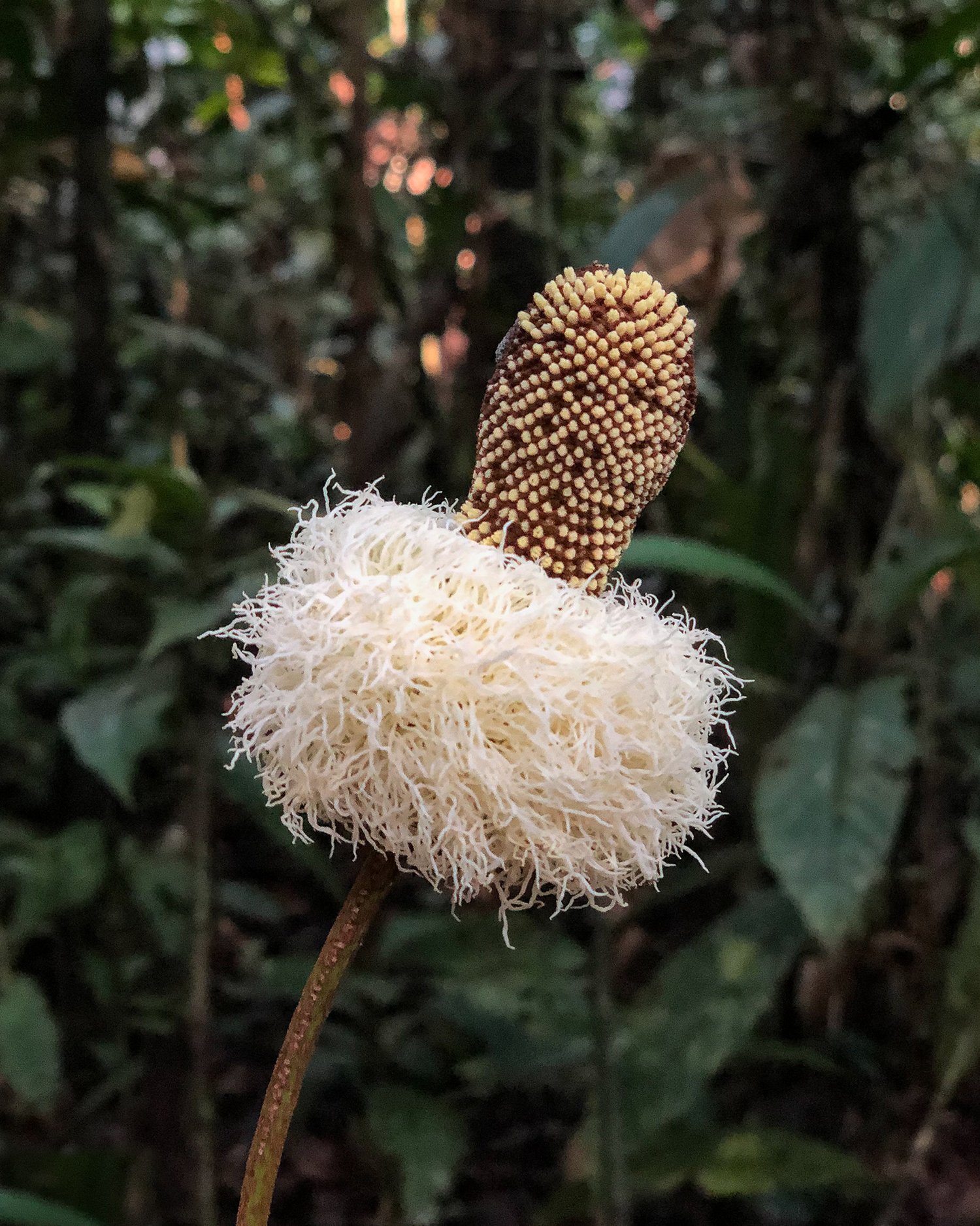
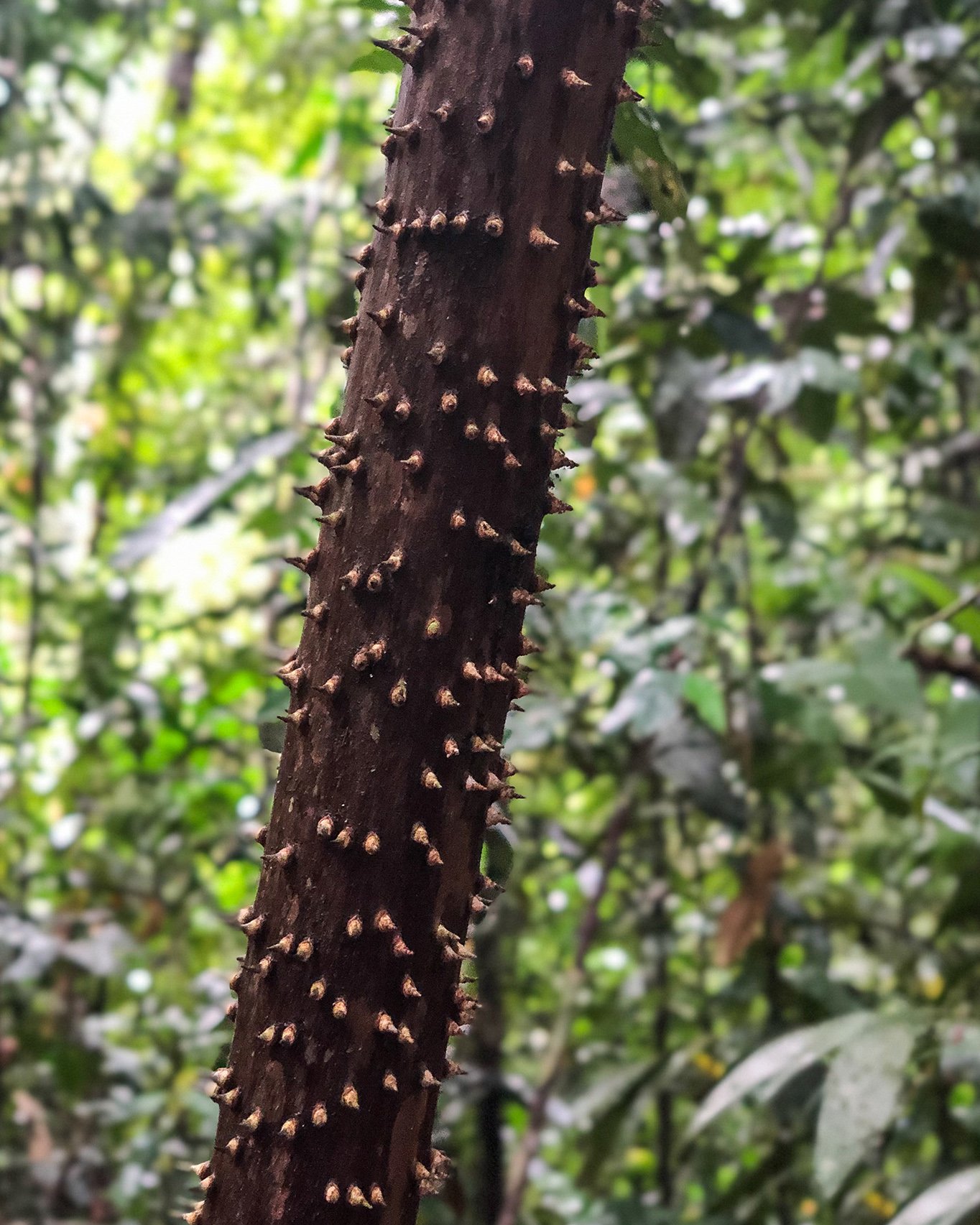

Workshops
While in the community, I was lucky enough to participate in a chambira braiding & natural dyeing workshop with Marina, Marlene & Julina and a clay workshop with Nancy, the one surviving Maijuna person who continues their ancestral tradition of foraging natural clay and hand-building & firing ceramic pots with it. With no experience in natural dyes and little experience in clay, I found both workshops to be absolutely awesome and enlightening to see how these women worked with the natural materials at hand to make beautiful functional wares.

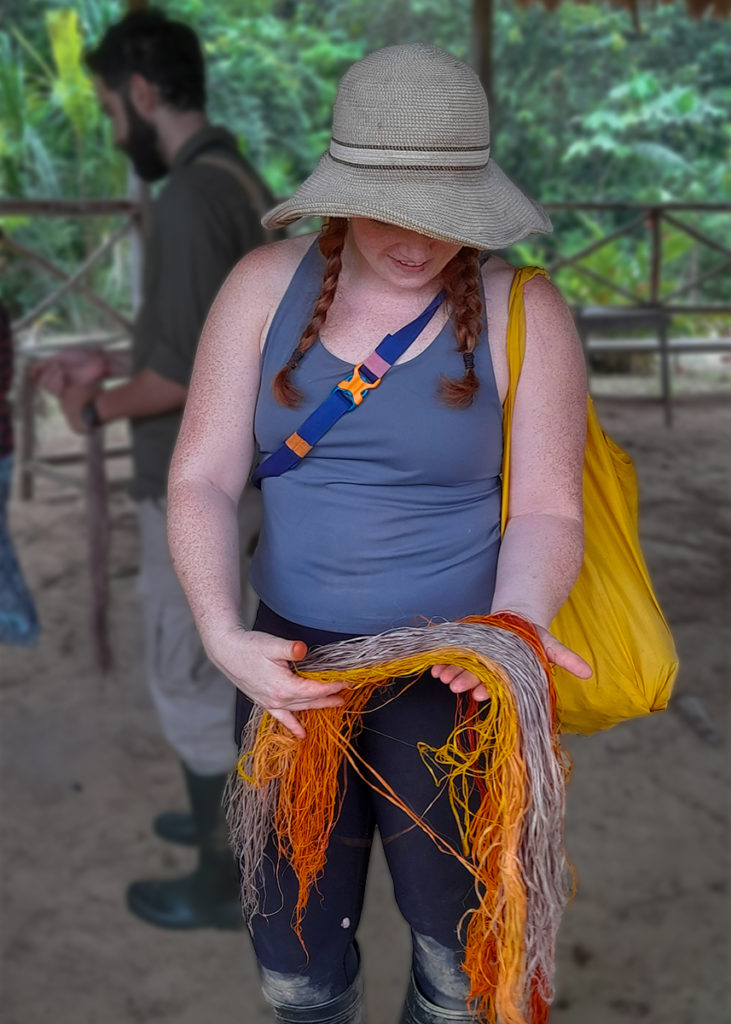

Marina had given me some pods of fresh achiote seeds to crush up for a burnt orange/red colored dye. While the crushed seeds made it home to my studio, they were fresh and wet and have since started to ferment, making whatever ink I attempt to create with them non-archival. I’ll still attempt to make ink with these crushed seeds as an experiment, but sadly they will most likely not make it onto this collection of prints due to their non-archival quality. However, failure is research as long as I try again, so I hope to return to figure out how to dry these crushed seeds into pigments for travel. I’ll also do some more experimenting with drying natural pigments here at home in the meantime so I’m better prepared!

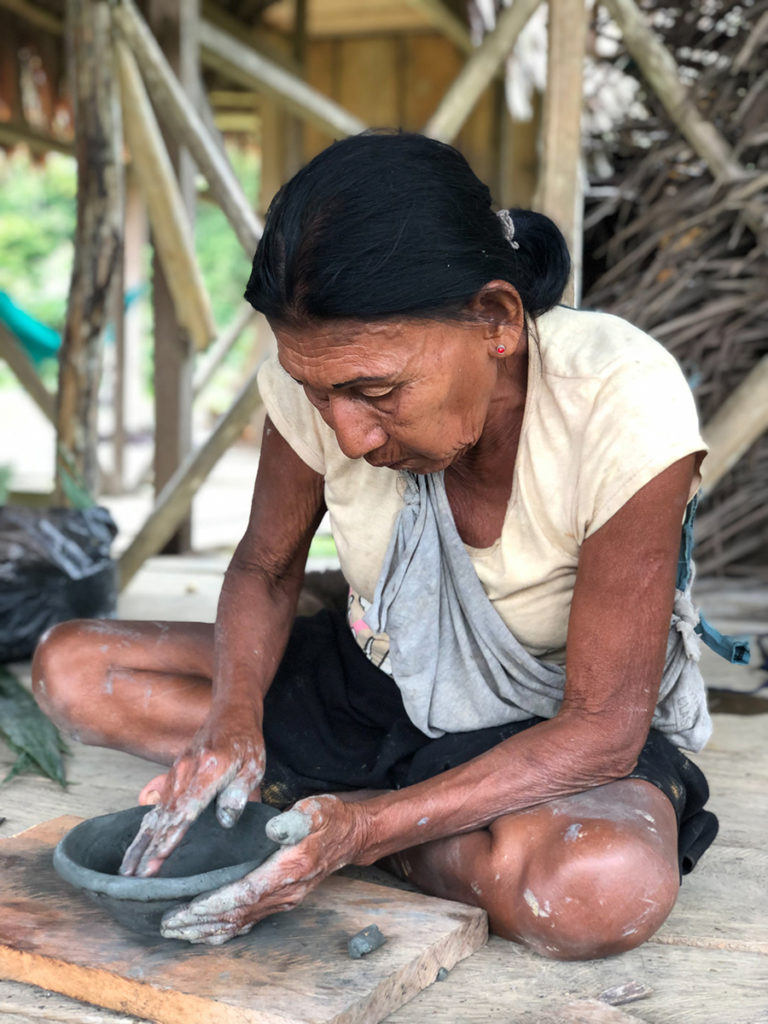
Back Home
I’m currently in the process of wrapping up digital mock-ups of the designs for my Lungs of the Earth Collection about the Amazon & our interconnectedness on this planet. I create digital mock-ups of all my designs before going to print the finished versions so I can test color and composition combinations. I do these digital mock-ups with scanned proof prints of all the various metal, wood or linoleum blocks in my studio.
I’m working out the details on some new rainforest trees made out of vintage metal type and doing final tests on some palm bark printed textures collected from my slow strolls in the forest. Then it’s time to get printing!
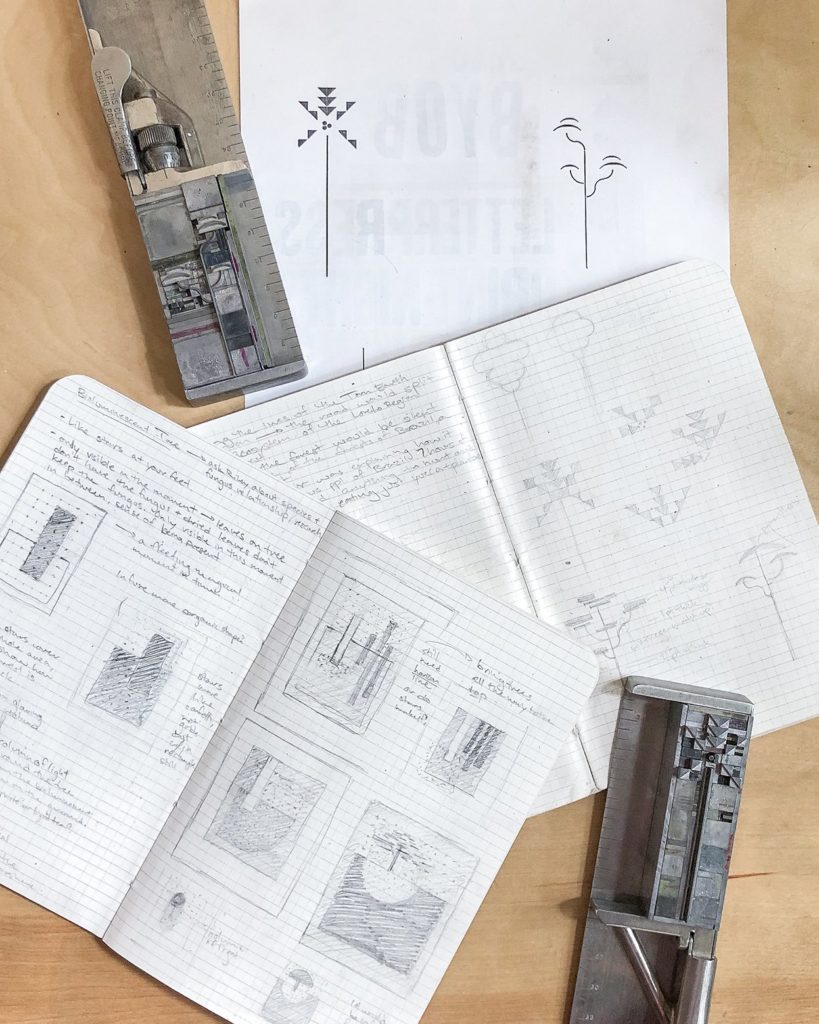
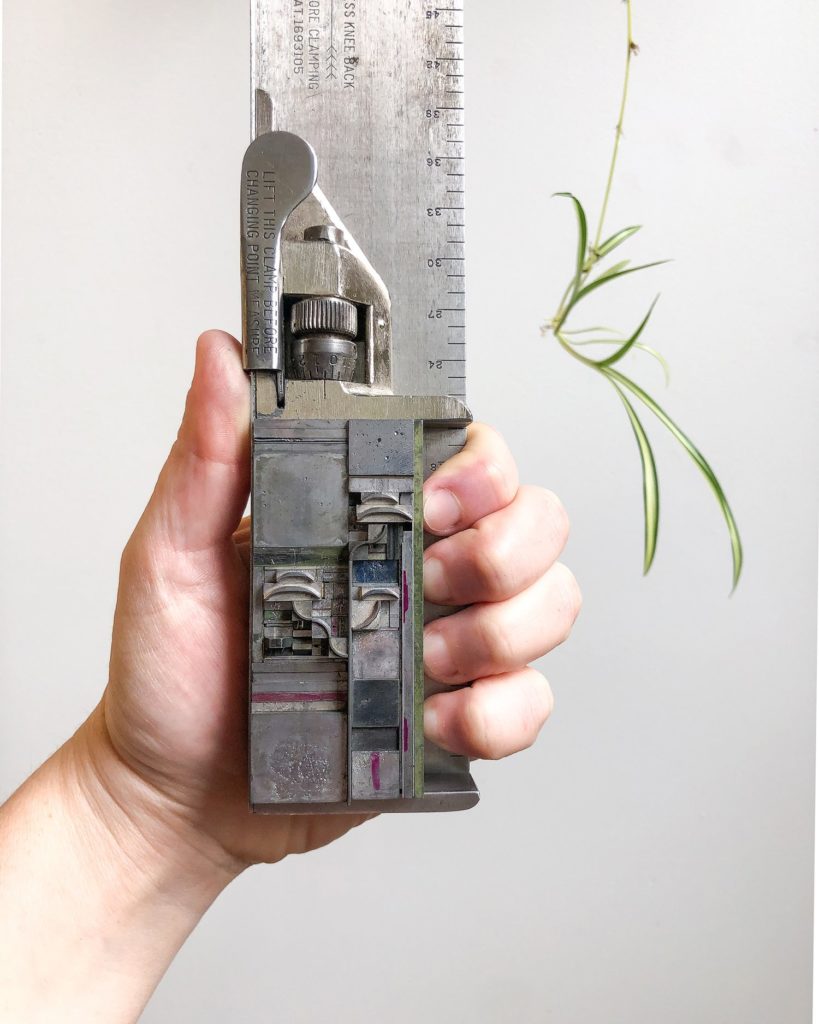
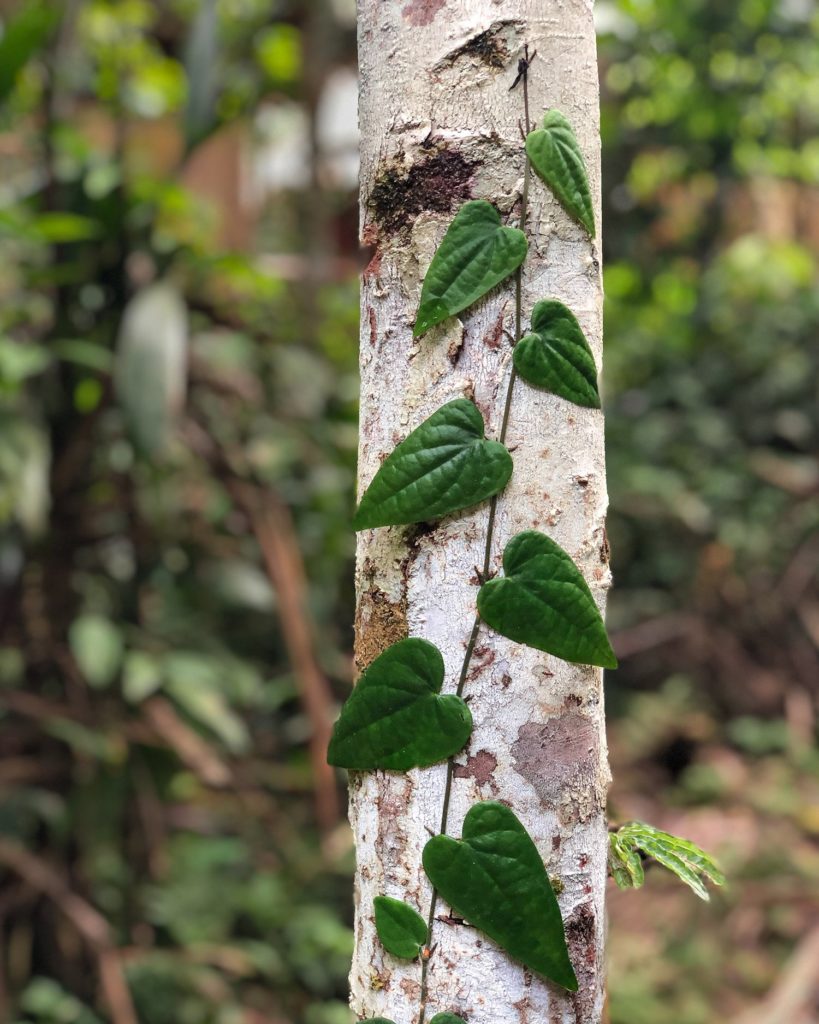
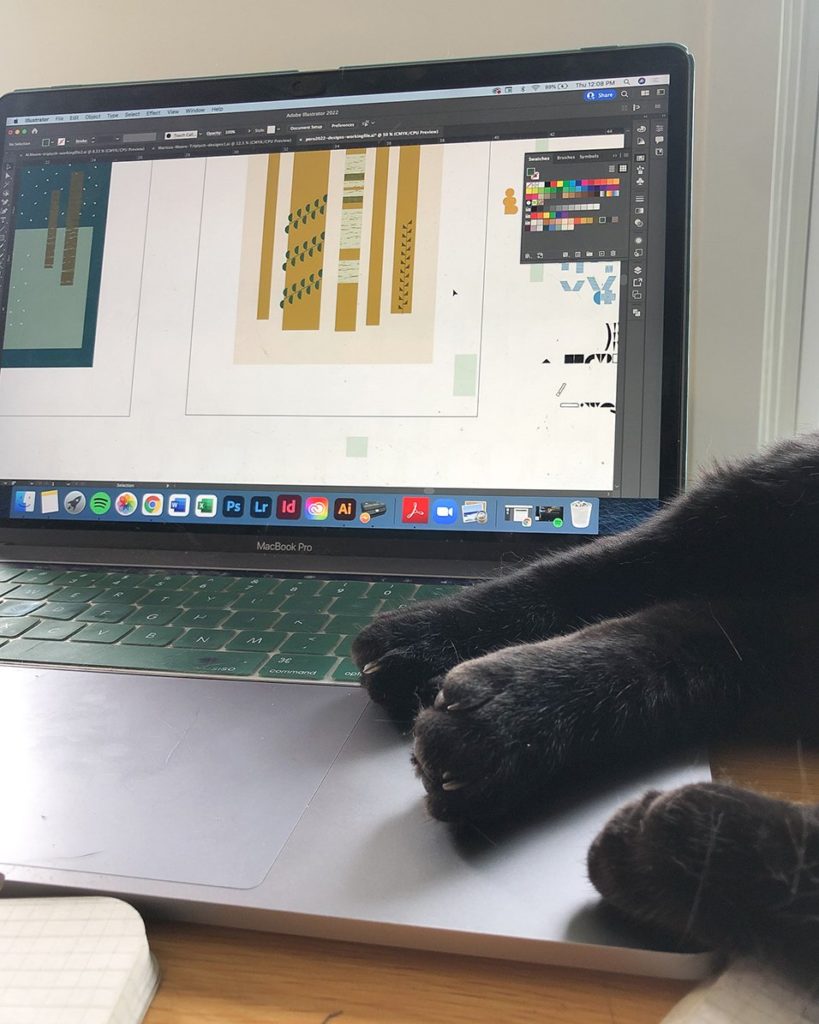
The Lungs of the Earth Collection is all about the interconnections of the rainforest & those that live in it and the interconnectedness of the world as a whole. It’s about learning from nature that we are all connected on this big planet. What happens in the Amazon Rainforest affects what happens at home, wherever your home may be on this planet. The Rainforest, its biodiversity and its people who sustainably care for it & depend on it are in trouble and need help. Mindless development continues to destroy the rainforest’s habitat, fragmenting it into smaller and smaller sections that can no longer support large wildlife, which then negatively impacts the entire rest of the food chain and ecosystem that are intrinsically intertwined.
A portion of proceeds from the Lungs of the Earth Collection will go directly towards funding the fight against the proposed highway corridor. The collection will launch in two parts, with some prints launching on April 28th in celebration of Earth Week and the rest of the prints launching on June 2nd—stay tuned, I can’t wait to share them with you!
What happens in the Amazon Rainforest affects what happens at home, wherever your home may be on this planet. The Rainforest, its biodiversity and its people who sustainably care for it & depend on it are in trouble and need help.
Guardians of the Forest
The latest threat to the health of the Amazon, and therefore the health of the planet, comes from the Peruvian Government with a proposal to build an illegal 130 km highway corridor directly through one of the most dense and biodiverse sections of legally protected rainforest. This highway would devastate the biodiversity of the forest, the Indigenous Maijuna people’s sustainable food resources and one of the world’s largest carbon sinks, releasing tons of carbon into the atmosphere, warming the planet even further, affecting us all.
George Mason University will be hosting an online film screening of Guardians of the Forest followed by a panel discussion with two Maijuna leaders, Sebastián Ríos Ochoa and Tarkis Ríos Ushiñahua, on April 13th from 6-8pm est. Register via the button below to attend this free online event!
